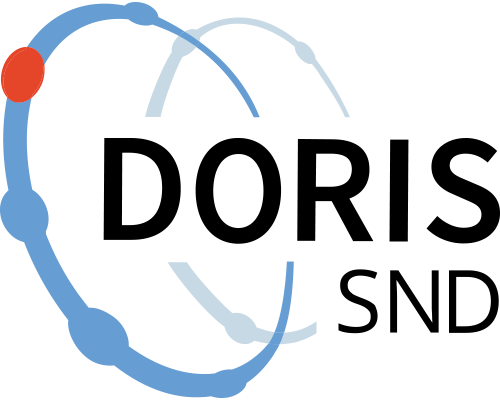WOLF - Mental workload and indicators of chronic cardiovascular diseases
WOLF is a study that started in Stockholm in 1993. The acronym WOLF stands for Work-Lipids-Fibrinogen. The study is a collaboration between the former Working Environment Institute, the Institute of Environmental Health and the Institute of Psychosocial Environmental Health at Karolinska Institute and the Institute of Social Medicine in Sundbyberg.
WOLF makes up a collaboration program with the included partial projects WOLF-Stockholm, WOLF-Norrland and WOLF-F (The importance of work organisation and psychosocial strain factors to stress related poor health, five year follow up of WOLF-Norrland).
Main question formulation: Mental work load (stress) and indications for chronic cardiovascular disease. This original and general program idea has been developed and detailed in the partial projects WOLF-Stockholm (WOLF-S), WOLF-Norrland (WOLF-N) and WOLF-F (the five year follow up of WOLF-N).
WOLF-Stockholm (WOLF-S)
Project term: The importance of psychosocial working environment for the risk factors for heart attack. A study in psychosocial working environment, blood pressure, blood lipids, fibrinogen etc. (WOLF-Stockholm).
Project manager: Lars Alfredsson, the Institute of Environmental Health, Karolinska Institute, Stockholm.
Study population: 5 698 employees at companies connected to occupational health care. Studied from June 1993 to June 1995.
Method: Health examination with focus on cardiovascular disease, blood pressure measurement. Blood samples for biochemical analysis (the laboratory concern CALAB, Stockholm) + questionnaires.
WOLF-Norrland (WOLF-N)
In 1995 WOLF established cooperation with the University of Umeå and started the project WOLF-N with the operative management located at the occupational and environmental medicine clinic at the University Hospital of Norrland (Anders Knutsson).
Project term: Questions on associations between risk indicators of heart attack and mental work strain related to factors in work organisation, working environment and work content (WOLF-Norrland).
Project manager: Anders Knutsson, Mittuniversitetet, Sundsvall, (former University of Umeå).
Study population: 4 715 employees at companies connected to occupational health care. Studied from September 1996 to April 1998.
Method and organisation with some modifications and additions, same as for WOLF-Stockholm.
WOLF-F (WOLF-Follow up project, continuation of WOLF-N)
During year 2000 WOLF-F was planned with field organisations and investigational populations in northern Sweden (Norrland). WOLF-F was given two directions:
1) WOLFF - Individual follow-up (WOLFF-I) consisted of a follow-up of the earlier examined population of WOLF-Norrland.
Project term: The importance of work organisation and psychosocial factors for stress related poor health. A five year follow-up of WOLF-Norrland.
Project manager: Anders Knutsson, Mittuniversitetet, Sundsvall.
2) WOLF - Healthy Work Places - Work Organisation (arbetsorganisation) (WOLF-AO) with focus on questions on work organisation and health with elaboration and widening of data collection and interview material.
Project term: Healthy workplaces - A study on relations of organisations and individuals and health.
Project manager: Staffan Marklund and Annika Härenstam, Working Life Institute (Arbetslivsinstitutet), Stockholm.
Study population: 32 selected companies, 90 work places and about 4300 employees. To a large extent coinciding with the examined population of WOLF-Norrland.
WOLF U (WOLF Follow up)
In 2009, all participants who previously responded to a WOLF-questionnaire were asked to fill in a follow-up questionnaire (WOLF-U). The survey included questions about work environment, lifestyle and health. The response was positive and about 6 500 people answered the survey. The follow up did not include a health examination.
Purpose:
To study effect of work and lifestyle on health
Contact for data - Eleonor Fransson
Opens in a new tabeleonor.fransson@ju.se
Documentation files
Documentation files
Citation and access
Citation and access
Data access level:
Creator/Principal investigator(s):
- Hugo Westerlund - Stockholm University - Stress Research Institute
- Torbjörn Åkerstedt - National Swedish Institute for Psychosocial Medicine
- Lars Alfredsson - Karolinska Institutet - Institute of Environmental Medicine
- Peter Westerholm - National Institute for Working Life - Work and Health
- Anders Knutsson - Mid Sweden University - Department of Health Sciences
- Göran Fahlén - Mid Sweden University - Department of Health Sciences
- Hans Goine - Mid Sweden University - Department of Health Sciences
- Maria Nordin - Umeå University - Occupational and Environmental Medicine, Department of Public Health and Clinical Medicine
- Bernt Karlsson - Umeå University - Occupational and Environmental Medicine, Department of Public Health and Clinical Medicine
- Eleonor Fransson - Karolinska Institutet - Institute of Environmental Medicine
- Töres Theorell - National Swedish Institute for Psychosocial Medicine
Research principal:
Data contains personal data:
Yes
Code key exists:
Yes
